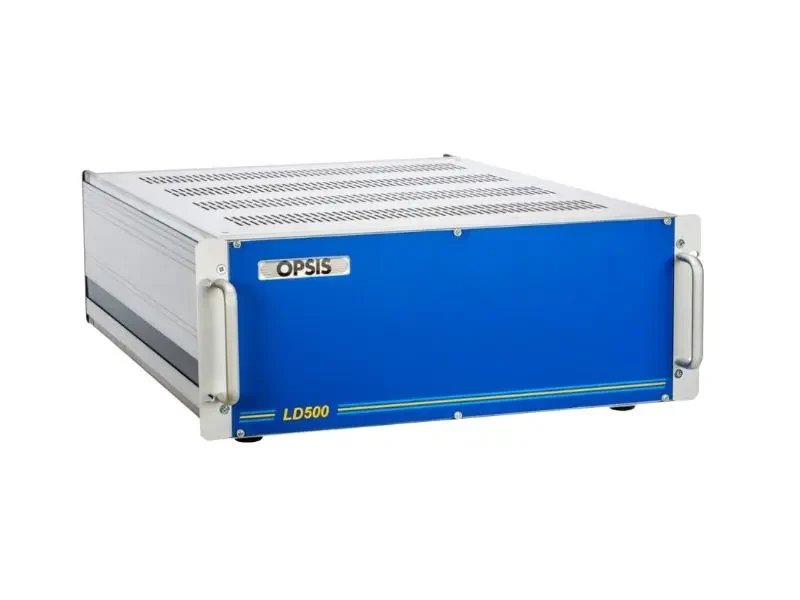Laser diode technology is a good choice if only single or a few types of air pollutants are to be monitored, or if a certain measurement performance for a specific type of pollutant is to be achieved.
The OPSIS LD500 analyser is the central unit in an OPSIS laser diode-based gas monitoring system. It can be used for both ambient air quality monitoring and for industrial continuous emissions monitoring and process control applications. The levels of the air pollutants of interest are measured along a measurement path just like in a DOAS system, in the industrial case with an emitter and receiver of model ER060L. The light emitted is delivered from the analyser via an optical fibre. The received light is measured by a photosensitive detector located inside the emitter/receiver. The signal from the detector is digitised and sent to the analyser via optical fibres.
How it works
The OPSIS LD500 is based on the tuneable diode laser (TDL) technique. Laser light is generated inside the instrument and brought to an emitter via a fibre optic cable. The light then passes an open volume of the gas to be analysed. While the laser is tuned, some of the laser wavelengths are absorbed by the molecules in the gas. The remaining light is picked up by a detector inside a receiver. The detector signal is sent back to the analyser via another fibre optic cable. Inside the LD500, the detector signal is analysed, and the gas concentrations are calculated.
The laser is housed in a modular laser head. The concentrations of one or two types of molecules can be measured using a single type of laser head. Combining two or more laser heads in a single LD500 enables monitoring of additional types of gases. Further, application of a multiplexer on the emitted laser light enables multi-path monitoring. A single LD500 can thereby monitor multiple gas concentrations at multiple monitoring points, making it the core of a very cost-efficient monitoring system.







